Saint-Julien Channels Pauillac: In Search of Purity, Precision and an Assertive Style, Bordeaux’s Château Ducru-Beaucaillou Achieves All in Their 300th Vintage Release, 2019 (3-Bottle Package $393)
Join Us for Saturday Sips
Come as you are; come any time that’s convenient for you during our business hours to sample from this week’s selections. Our staff will be on hand to discuss nuances of the wines, the terroirs reflected, and the Château.
If ever an estate has enshrined within its very name the fact that grapes thrive where other crops fail, it is Château Ducru-Beaucaillou: The famous lieu-dit of Beaucaillou (good pebbles) was once called Maucaillou (bad pebbles) when they tried to grow cereal crops instead of grapevines. It is the deep Günzian gravel that earns the terroir both scorn and praise from farmers (depending on crop; along with soil, a favorable climate and the general wherewithal of generations of vignerons, Ducru-Beaucaillou’s reputation has held strong—and grown—for three centuries. Vintage 2019 marks this very milestone and the estate’s outspoken owner Bruno-Eugène Borie considers it a spectacular vintage in which the château’s legendary purity, precision and assertive style is on full display.
This week’s package offers a fascinating peek behind the curtain at Ducru-Beaucaillou to see how climate change has restructured priorities and bred innovation, and how the leadership of Bruno Borie has led to a number of incredible undertakings, including re-corking a full inventory of 40 vintages (1950 and 1990) in an oxygen-free environment, giving them an extended life of 50 more years.
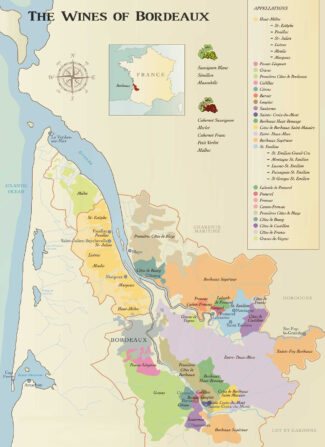
Saint-Julien & Pauillac: Neighboring Communes
The most singularly revered appellation on earth, Pauillac is to wine what The Beatles are to pop music. Though fewer than ten square miles in total, three of the top five châteaux in the 1855 Médoc Classification are located here, and so varied is the topography that each estate is able to market the individual nature, in style and substance, of their wares. And it is this trio of skills—growing, producing and selling—that has made the region almost a cliché, synonymous with elite wine, where futures sell for exorbitant rates long before the wine is even in the bottle.
Great things come in small packages, especially when big money is involved. Saint-Julien—the smallest of the major Médoc appellations at under four-square miles—also boasts (through a series of real estate deals between the large estates and the small ones) an astonishing pedigree: Fully 95% of the appellation sits on classified acreage. Key to the desirability of the wines produced here is the seamless fusion of concentration and elegance; the wines are of a style historically referred to as masculine, but held to standards of manhood in the mode of a Knight Templar before a brawny warrior. This blend of finesse and fortitude comes in part from the preponderance of gravel in the best vineyards, allowing natural drainage in the wet years, radiating warmth in cool vintages, extending the growing season and allowing vine roots to extend deeply into the earth.
omne trium perfectum
300th Vintage Release: Three-Bottle Package ($393)
The estate’s 300th anniversary was blessed with magnificent growing conditions, which brought forth a wine of particular distinction. Ideal levels of rain (falling mostly at night, guaranteeing freshness) while clear days and cool nights in September, together with a heatwave in the middle of the month, helped to concentrate the fruit and ripen the very fine tannins.

The wine package we offer this week includes one bottle of the special Tercentenary bottling of Château Ducru-Beaucaillou 2019 and two bottles of 2019 ‘La Croix Ducru-Beaucaillou’ which hails from a separate vineyard and yet is considered one of the best second labels in the business.
Château Ducru-Beaucaillou
Passion Perfects Nature’s Opus
Beside the poetry in a rhyming name, this hallowed Second Growth estate, given high praises in the 1855 classification, has produced the best wines in its history in the 21st century. This is credit to the Borie family, who bought the château in 1941.The current helmsman is Bruno, who grew up on the estate: “I was born and raised at Beaucaillou and I have always been immersed in this country landscape and lifestyle, in the vineyards and the pastures, cattle and all; I basked in the fascinating environment of the cellars, where the transmutation of the grape juice into wine, and then the slow maturation of the young wine into these magical elixirs takes place.”
He learned the magic of wine early, but to nail down the business and technical end, he spent time in California as a winery intern before becoming the Commercial Director for P.A. Sichel and the CEO of Lillet, the Bordeaux aperitif. He began to manage Beaucaillou in 2003, where he was instantly confronted with the excessive heat the Bordeaux had begun to suffer with global warming. This required that he embark upon a paradigm shift to tackle the changing climate, and it perseveres to the day: “My first major decision was to not have a preconceived agenda,” says Bruno, “but rather to listen to nature and try to tailor our approach accordingly. For 2003, this meant very little leaf thinning to keep bunches shaded and protected from the scorching rays of the sun.”
These days, Borie relies on a number of quality initiatives, including more selective harvesting and establishing more organic farming practices: “We now cultivate and plough various grasses and legumes to help aerate the soil,” he explains. “This increases biodiversity, and the quantities of critical nutrients. When replanting vineyards, we leave our plots fallow for five years, during which time we perform a deep ploughing to reduce compaction, and then cultivate various grasses in rotation to help preserve our precious soils.”
The Vineyard: Maucaillou, Beaucaillou
The clock began to tick towards Château Ducru-Beaucaillou’s tercentennial hurrah in 1720, when Jacques de Bergeron married Marie Dejean, whose dowry included land known as Maucaillou, a name formed as a portmanteau of the French words ‘mauvaise’ and ‘cailloux’ meaning ‘bad pebbles’. The first records of the name change from ‘bad’ to ‘good’ is 1760.
The titular stones, good or bad, are quartz pebbles swept in by the ancient Garonne river at the beginning of the early Quaternary Period, about two million years ago. Beyond the gems it produces in the cellar, terroir so blessed also offer rich lithological finds like Lydian jasper and agatoids. The gravel is less kind to plants, giving rise to poor soils—a condition to which grape vines are well suited. Their vast network of roots, snaking through the gravel, are able to draw nutrients from far below. A bonus is that in cooler weather, the stones retain daytime heat and return it to the vines at night to facilitate the ripening of the grapes.
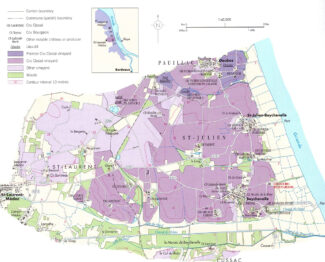
Ducru-Beaucaillou’s proximity to the vast Gironde River estuary—where four daily tides mitigate the rigors of winter and moderate the summer heatwaves—may also deflect the trajectory of hailstorms. The vineyard is located to take advantage of these natural features, beginning immediately above the low-lying marshland of the Gironde, about three hundred yards from the estuary and extending to the west, ending at a slight elevation that offers natural drainage of rainwater into the Gironde or the tiny Mouline brook to the north.
Bruno Borie: Works To Balance Centuries Of Tradition With Contemporary Viticulture
“I was born in 1956 and raised in Ducru-Beaucaillou,” say Bruno Borie. “I was truly a country boy, preferring to run through vineyards and meadows than taking walks in the town. I enjoyed the company of the winegrowers and loved taking part in the various jobs, including, of course, the harvest.”
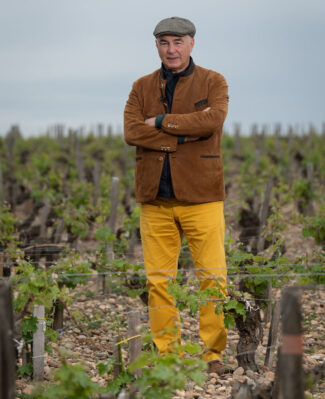
Bruno-Eugène Borie, Château Ducru-Beaucaillou
In his years exploring the vineyard as a living entity as well as a financial concern, Borie has developed a deeply personal philosophy about his role: “We help the vineyard give birth to wine. Nature can do it all; we are here to allow nature to express and share the best of herself. I am here to make Ducru-Beaucaillou, not just another Cabernet Sauvignon or another Cru Classé.”
To this end, he has overseen significant changes in Beaucaillou viticulture, introducing new techniques and reviving forgotten practices, looking both towards the past and modern science. Although he considers biodynamics to be more esoteric than scientific, the entire vineyard was certified HVE 3 in 2016 and he eschews the use of herbicides and pesticides. Emmanuel Bonneau joined the team as technical director in 2016, and is currently researching phytotherapy (the medicinal use of medicinal plants and herbs) to tackle mildew, while lightweight robots reduce soil compaction.
“The most crucial element in making fine wine is to be close to the plant and its ecosystem,” Bruno explains. “Our system of pruning, for example, consists of preparing the vine not only for next year, but following ones. Therefore, it must be the same person who prunes from one year to another because he ‘reads’ each vine the same way. Each of our vignerons is assigned a selection of plots for all seasonal vineyard operations which fosters a deeper connection with the vines through continuity. This ensures that our approach is the most adapted for our environment and our vines.”
The Harvest: The When And Why
The decision of when to harvest is a complex one, and it would be fair to say that every estate has their own formula though which they determine picking schedules, based both on weather and the style of wine they’re after. It’s no different at Beaucaillou, where, according to Bruno, “We pick each plot when fruit is at optimal ripeness and then seek to preserve its purity and enable it to express its terroir fully. We also consider blending compatibility for harvest date. For example, the 5-15% of Merlot in the blend of Ducru needs to be Médoc-like in style. It must be compatible with Cabernet with typicity, freshness and elegance to counterbalance Merlots that are overly rich. To determine the precise harvest date for each plot, we collect and analyze the critical measures (sugar, IBMP, acidity, pH), but the final decision is based entirely on taste.”
Winemaking: Selection And Precision
A combination of artisan methods and new innovations form the backbone of Château Ducru-Beaucaillou’s cellar tenets; leading the second category is the use of conical wooden ‘Smart Vats’ for the Grand Vin. Smart Vats have a number of advantages, including automatic and gentle remontage that can be fractioned over 24 hours with complete oxygen control for extreme precision, analyzing and storing relevant data on sugar, density and oxygen throughout cuvaison, allowing a refinement of approach and data saved for current decisions and future reference.
The traditional methods that Borie employs includes ‘slow hand’ extraction: First come a cold maceration, then gentle remontage in the earlier phases of fermentation when critical decisions are made by taste and tanks are sampled several times per day. The goal, according to Borie, is the extract noble tannins with the most refined grains, giving the ‘draped cashmere’ mouthfeel for which Ducru-Beaucaillou is widely praised.
“Of course, we consider the data,” Borie says, “and Smart Vats enable us to conduct our extractions with even more precision to achieve this goal. In the end, science allows us to make better art.”
2019 Vintage: Low Yields But Pure, Aromatic And Well-balanced
Like much of the Left Bank, the 2019 growing season for Saint-Julien began with a mild, if lackluster spring that saw cool temperatures and patches of rain in the run-up to the summer months (although rainfall was still less than in other Bordeaux appellations, leading to lower yields than average). A warm, dry summer ensured the grapes reached phenolic ripeness and, bar some rainfall towards the end of the season, conditions remained smooth and easy for a seamless harvest.
The resulting grapes were extremely healthy, and naturally, this translates to the wines. In general, the wines are sophisticated and powerful with rich, dark fruit and velvety tannins while still retaining delicate aromatics. The best 2019s exhibit the ideal balance between fruit, acid, alcohol and tannin needed for long-term aging. Although many of the wines will make very pleasant early drinking, the top examples should be able to cellar for many years to come.
2019 At Ducru-Beaucaillou: Cabernet Sauvignon Is Key
So hot was the summer of 2003—the year that Bruno Borie took over Ducru-Beaucaillou—that he knew that winemaking in Bordeaux would likely never be the same. Going forward, weather, rather than tradition, would dictate work in the vineyard. Harvest dates were creeping forward and August vacations were a thing of the past. 2019 was another hot season, and Bruno realized that this sort of weather pattern was ideal for Cabernet Sauvignon, a thick-skinned variety that requires a lot of accumulated heat and sunlight hours to fully ripen.
He says, “With warmer summers like 2019, the fruit is richer and more concentrated with longer length, and the thick skins, which ripen during the final phase, can fully ripen, giving deeply colored wines with high levels of extremely fine-grained, ultra-silky tannins. At Ducru, we have three key strengths as we face climate change: privileged terroirs, the dominance of Cabernet Sauvignon, and of course highly invested and competent technical teams, including Cellar Master René Lusseau and Oenologist Consultant Eric Boissenot.”
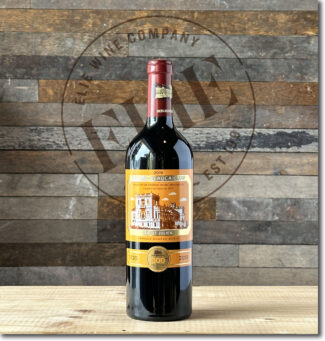 2019 Château Ducru-Beaucaillou, Saint-Julien ($245) (1 BOTTLE)
2019 Château Ducru-Beaucaillou, Saint-Julien ($245) (1 BOTTLE)
80% Cabernet Sauvignon and 20% Merlot matured for 18 months in 100% new French oak. Purple-black in color, the 2019 Ducru-Beaucaillou explodes from the glass with notes of cassis, blueberry pie and plum preserves behind hints of candied violets, dark chocolate, licorice, crushed rocks and freshly-overturned soil with a touch of mossy bark—a wine whose finish passes the 60-second mark with ease.
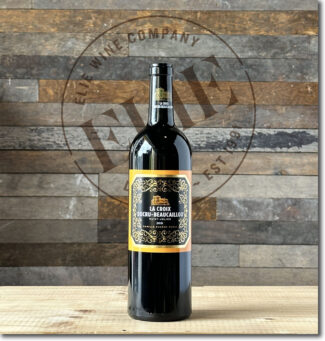 2019 Château Ducru-Beaucaillou ‘La Croix Ducru-Beaucaillou’, Saint-Julien ($74) (2 BOTTLES)
2019 Château Ducru-Beaucaillou ‘La Croix Ducru-Beaucaillou’, Saint-Julien ($74) (2 BOTTLES)
The estate does not market La Croix Ducru-Beaucaillou as a ‘second wine’ because it comes from a different source: an inland vineyard on the south bank of the La Mouline stream close to Château Talbot; it was previously sold as Château Terrey-Gros-Caillou. It consists of 91 acres planted with 65% Cabernet Sauvignon, 25% Merlot, 5% Cabernet Franc and 5% Petit Verdot. The breeding is made for 60% in new oak barrels 12 months, producing a muscular yet fresh wine, displaying a full range of berry, lavender rose petal, mint, spice and gravel inflections.
Time Capsules
A Half-Century of Ducru-Beaucaillou
As Bruno Borie carefully recorked all vintages between 1930 and 1990, this divine diorama looks at some of the top vintages from the estate of the past half-century—so many, in fact, that it frequently said that Ducru-Beaucaillou is a Second Growth that deserves First Growth status.
2010: A Promise of Longevity
Recognized as legendary across the board, 2010 was truly great vintage whose exceedingly dry growing season served to concentrate the juice and provide wines with outstanding depth.
Despite a wet June giving a damp start to summer, the season soon heated up turning exceedingly hot and dry, particularly in the Médoc region; the arid conditions caused the right amount of water stress to improve the berries, and the long, sunny days continued through to October with nights steadily chilling as the season drew to a close. Cool nights were imperative to preserving the acidity in the grapes and rains, fortunately, came in September freshening the grapes.
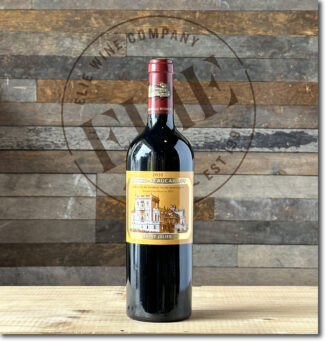 2010 Château Ducru-Beaucaillou, Saint-Julien ($550)
2010 Château Ducru-Beaucaillou, Saint-Julien ($550)
Just beginning to fully open up, the wine is now entering a drinking window that should last two more decades at least. A sensuous nose offers layers of blackberry paste and warm ganache, steeped fig and pastis-soaked plum flavors. The structure is massive yet polished, and the fruit displays purity through a graphite-supported finish. Large-scale and extremely well-rendered. 8,416 cases made.
2000: A Stunning Vintage, Closer To Maturity
A mild, warm winter followed by a wet spring made mildew a threat, but from July onwards, a spectacular summer dominated Saint-Julien with hardly any rain until mid-September. Sunny weather then returned for the October harvest, broken by a single day of rain—a boon to parched vines. Producers who picked early risked unripe wines and others who picked later risked jamminess, but for the majority who picked at the right time, the vintage offers fantastic rewards.
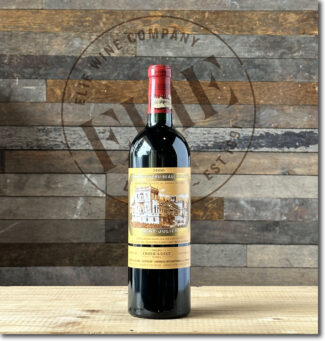 2000 Château Ducru Beaucaillou, Saint-Julien ($490)
2000 Château Ducru Beaucaillou, Saint-Julien ($490)
70% Cabernet Sauvignon and 30% Merlot, the truly stunning garnet-brick colored 2000 Ducru-Beaucaillou offers flamboyant scents of baked black currants, raisin cake, prunes, Chinese five spice and eucalyptus plus touches of cigar box, new leather and cast iron pan. It will continue to improve, too.
1983: Fully Mature
1983’s growing season in Saint-Julien began with a cold winter and chilly, wet spring. Balmy conditions settled in shortly afterward, allowing for a near-perfect budburst and flowering, and, despite a brief cool patch, temperatures than rocketed in July with the month even proving a record breaker. Drought was a problem but only through August, which brought plenty of rain. September brought drier, sunnier conditions and a run of good days in the lead-up to the harvest ensured the resulting crop was in good health. The harvest began towards the end of September and ran through to October, producing a generous but good-quality crop.
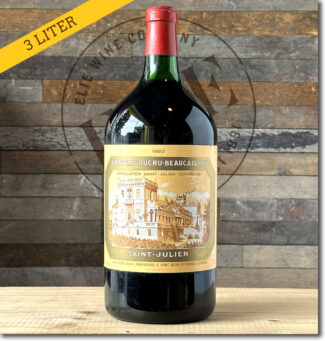 1983 Château Ducru-Beaucaillou, Saint-Julien ($2,400) DOUBLE-MAGNUM
1983 Château Ducru-Beaucaillou, Saint-Julien ($2,400) DOUBLE-MAGNUM
Although some ‘83s lacked the structure for long term again, large format bottles age at a much more leisurely pace, and thus, are ideal to experience the nuance changes in this full-bodied wine showing blackberry and hazelnut behind a beautiful base of gravelly soil tones, cigar ash and a touch of juniper berry. Perhaps currently drinking at its apogee, the wine is svelte and pure on the attack with melting tannins and a long, complex and seamlessly balanced finish.
1978: The Miracle Vintage
Known as the ‘Miracle Vintage’, 1978 began with a damp, chilly spring that affected both bud break and flowering. Conditions eventually improved, but it was not until the end of the summer the weather had sufficiently warmed up and dried out. There followed a string of idyllic, sunny days, perfect for bringing the crop to phenolic ripeness and these perfect conditions late in the season rescued the vintage from possible disaster—the so called ‘miracle.’ The heavy rains of October came late, holding off until all the fruit had been picked—another manifestation of the miracle.
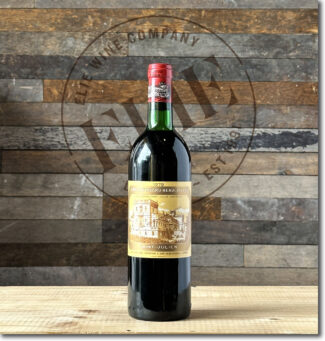 1978 Château Ducru-Beaucaillou, Saint-Julien ($450)
1978 Château Ducru-Beaucaillou, Saint-Julien ($450)
‘78 Ducru is considered one of the unequivocal successes from this vintage. From the outset, the well-developed bouquet of licorice, earth, black currants, and underbrush shone none of the vegetal character found in many wines of the vintage. Now fully mature, the medium-bodied Saint-Julien gem exhibits soft tannin, excellent concentration and purity, and a sweet, elegant finish.
- - -
Posted on 2023.09.08 in Pauillac, Saint Julien, France, Bordeaux, Wine-Aid Packages
Featured Wines
- Notebook: A’Boudt Town
- Saturday Sips Wines
- Saturday Sips Review Club
- The Champagne Society
- Wine-Aid Packages
Wine Regions
Grape Varieties
Albarino, Albarín Blanco, Albarín Tinto, Albillo, Aleatico, Aligote, Arbanne, Aubun, Barbarossa, barbera, Biancu Gentile, bourboulenc, Cabernet Franc, Caino, Caladoc, Calvi, Carcajolu-Neru, Carignan, Chablis, Chardonnay, Chasselas, Cinsault, Clairette, Corvina, Counoise, Dolcetto, Erbamat, Ferrol, Frappato, Friulano, Fromenteau, Gamay, Garnacha, Garnacha Tintorera, Gewurztraminer, Graciano, Grenache, Grenache Blanc, Groppello, Juan Garcia, Lambrusco, Loureira, Macabeo, Macabou, Malbec, Malvasia, Malvasia Nera, Marcelan, Marsanne, Marselan, Marzemino, Mondeuse, Montanaccia, Montònega, Morescola, Morescono, Moscatell, Muscat, Natural, Niellucciu, Parellada, Patrimonio, Pedro Ximénez, Petit Meslier, Petit Verdot, Pineau d'Aunis, Pinot Blanc, Pinot Gris, Pinot Meunier, Pinot Noir, Pouilly Fuisse, Pouilly Loche, Poulsard, Prieto Picudo, Riesling, Rondinella, Rose, Rousanne, Roussanne, Sagrantino, Sauvignon Blanc, Savignin, Sciacarellu, Semillon, Souson, Sparkling, Sumoll, Sylvaner, Syrah, Tannat, Tempranillo, Trebbiano, Trebbiano Valtenesi, Treixadura, Trousseau, Ugni Blanc, vaccarèse, Verdicchio, Vermentino, Xarel-loWines & Events by Date
- July 2024
- June 2024
- May 2024
- April 2024
- March 2024
- February 2024
- January 2024
- December 2023
- November 2023
- October 2023
- September 2023
- August 2023
- July 2023
- June 2023
- May 2023
- April 2023
- March 2023
- February 2023
- January 2023
- December 2022
- November 2022
- October 2022
- September 2022
- August 2022
- July 2022
- June 2022
- May 2022
- April 2022
- March 2022
- February 2022
- January 2022
- December 2021
- November 2021
- October 2021
- September 2021
- August 2021
- July 2021
- June 2021
- May 2021
- April 2021
- March 2021
- February 2021
- January 2021
- December 2020
- November 2020
- October 2020
- September 2020
- August 2020
- July 2020
- June 2020
- May 2020
- April 2020
- March 2020
- February 2020
- January 2020
- December 2019
- November 2019
- October 2019
- September 2019
- August 2019
- July 2019
- June 2019
- May 2019
- April 2019
- March 2019
- February 2019
- January 2019
- December 2018
- November 2018
- October 2018
- September 2018
- August 2018
- July 2018
- June 2018
- May 2018
- April 2018
- March 2018
- February 2018
- January 2018
- December 2017
- November 2017
- October 2017
- September 2017
- August 2017
- July 2017
- June 2017
- May 2017
- April 2017
- March 2017
- February 2017
- January 2017
- December 2016
- November 2016
- October 2016
- September 2016
- August 2016
- July 2016
- June 2016
- May 2016
- April 2016
- March 2016
- February 2016
- January 2016
- December 2015
- November 2015
- October 2015
- September 2015
- August 2015
- July 2015
- June 2015
- May 2015
- April 2015
- March 2015
- February 2015
- January 2015
- December 2014
- November 2014
- October 2014
- September 2014
- August 2014
- July 2014
- June 2014
- April 2014
- March 2014
- February 2014
- January 2014
- December 2013
- November 2013
- October 2013
- September 2013
- August 2013
- July 2013
- June 2013
- May 2013
- April 2013
- March 2013
- February 2013
- January 2013
- December 2012
- November 2012
- October 2012
Search



